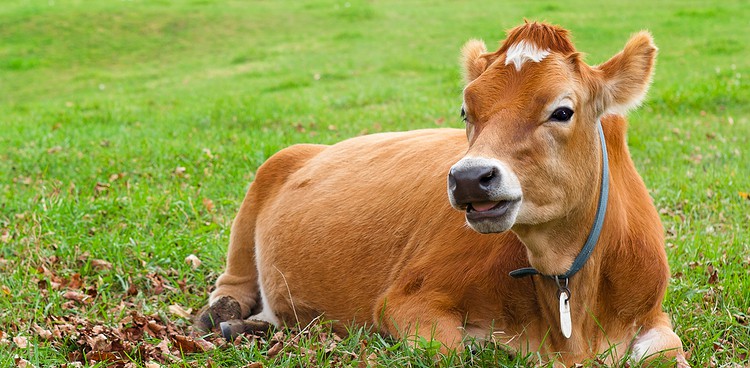
Vermont governor Peter Shumlin made waves in the food producing community in 2014 when he signed a bill into law that would require grocery products containing GMOs to be labeled as such. Responding to the Vermont Right to Know Coalition, Shumlin’s action stipulated that the state’s attorney general would have two years to sort out the nuances of the new requirement: What qualifies as a GMO? How should the food actually be labeled? Where do animal products stand in this operation? And—most importantly—where does cheese stand in all this?
Rennet, the coagulating enzyme complex that traditionally makes cheese, well, cheese, used to be collected from calves’ stomachs. In 1990, a technique developed by scientists was approved to genetically engineer chymosin, the primary enzyme in rennet, without slaughtering calves. Cheese made with this chymosin, though, squeezes by without a GMO label. Why?
The answer is simple: The chymosin that results from this process is technically not a GMO. The last step in the process is to “purify” the chymosin, stripping away the extraneous cellular material, and what remains is simply a protein chemically identical to that found in the stomach of a calf. “Chymosin is not genetically modified,” University of Wisconsin-Madison professor of food science John Lucey says. “It wouldn’t be scientifically accurate to call the enzyme itself genetically modified.”
Cheese’s other debatable ingredient in label-regulating limbo is milk. Lawmakers have had to wrestle with the question of what exactly qualifies milk—or any animal byproduct, for that matter—as genetically modified. If the animal producing the milk eats a diet of GMO feed, does that leave its mark on the milk?
The answer, according to Vermont’s recently released guidance, is no. The document states that the law exempts “all animal products—unless the animal, itself, is the product of genetic engineering—including processed dairy products, unless the product requires labeling because of additional ingredients (e.g., ice cream produced with genetically engineered sugar).” This comes as a relief to dairy farmers and grain farmers alike; a huge percentage of animal feed is made from GMO crops, which allow for higher yields and lower prices. If cheese carried a GMO label because of the grain that the cows ate before being milked, consumers might be deterred, and, consequently, dairy farmers might be forced to try to buy non-GMO feed, which is significantly more expensive than conventional GMO feed, which in turn affects their bottom line and, in the case of many small farmers, their very existence.
Vermont’s law, which has been hotly contested because of this confusion surrounding the actual effects of GMOs and imagined ones, may lose its footing as quickly as it took effect now that both the House of Representatives and the Sentate have passed their own federal bill to regulate GMO labels. If President Obama officially signs it into law, as the administration has indicated he will, the bill will be far less stringent than the rules that Vermont has in place. Under the federal regulation, companies will be required to disclose the GMO ingredients in their products, but they do not have to actually list them on the package. They can, instead, include a QR code, phone number, or website to direct consumers to the information—an effort small-scale enough to escape consumers’ notice or, worse, confuse them.
Debate continues over whether GMOs are harmful or neutral—many believe that specifically labeling deters consumers unnecessarily and acts as a sort of scarlet letter, but as many are adamant that a full understanding of what’s in food is a consumer’s right. But, in any case, if cheese isn’t considered a GMO under Vermont’s thorough law, it likely won’t carry a label if the federal law passes either.
[This post has been updated to reflect that the House of Representatives has passed the GMO labeling law.]
Feature Photo Credit: cdrin | Shutterstock



